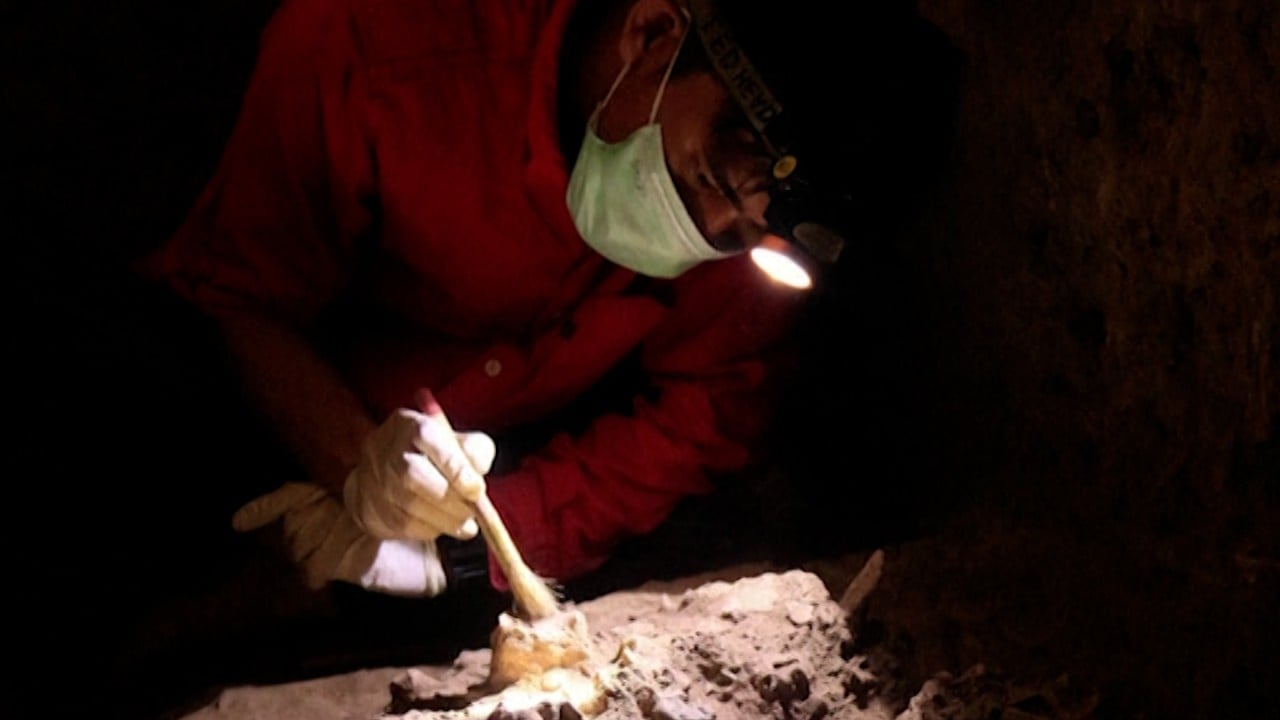The findings showed that the mothers in both cases were from the West, contrary to previous assumptions in the academic community.
This means that these two people are most likely the descendants of local men and the Western exotic woman known as “Hu Ji” in classical Chinese literature.
One of the study’s authors, Wen Shaoqing, an associate professor at Fudan University in Shanghai, said that based on the available genomic information, they could not determine the exact location of the West, which in modern terminology usually refers to Europe.
Therefore, when doing research, they use a relatively wide scope. The West mainly refers to the area west of Central Asia in Eurasia, and the East refers to East Asia.
Chinese archaeologists discover connection between pentagram and music in ancient documents
Chinese archaeologists discover connection between pentagram and music in ancient documents
Dunhuang is located in present-day western Gansu Province and is part of the Hexi Corridor, a narrow 1,000 km (620 mi) passage west of the Ordos Loop on the Yellow River.
Transcontinental material and cultural exchanges along the Hexi Corridor are well documented, including East Asian millet and painted pottery, West Asian wheat and barley, bronze metallurgy, and domesticated animals, but little is known about population dynamics there.
Jin Xin, deputy director of the BGl-Research Precision Health Institute of the China Genome Research Center, said that this is an interesting study that fills the knowledge gap. King was not involved in the study.
The study, published Dec. 16 in the peer-reviewed journal Science Bulletin, was a joint project between researchers at China’s Fudan University, Xiamen University and the Gansu Provincial Institute of Cultural Relics and Archeology.
The prosperity of the Silk Road not only promoted economic and cultural exchanges between the East and the West, but also promoted transnational population flows.
The Hexi Corridor was at the forefront of China’s interaction with world civilizations at that time, so it was natural to hope to answer some scientific questions, such as when did the population mixing there occur? Wen said.
The research team analyzed the human genome data of 30 individuals found in different areas of the Hexi Corridor, covering three periods before the Han Dynasty, the Han and Tang Dynasties, and modern times.
Among them, 17 come from the central part of the Hexi Corridor and date from the Han Dynasty (202 BC to 220 AD). The other 13 come from the western region and date from the Cao Wei to the Tang Dynasty. They were unearthed from the Foye Miaowan Cemetery in Dunhuang. That’s where two multiracial people were discovered.
We can determine the age of ancient bones through a technique called radiocarbon dating. If we can obtain information about the DNA they carry, we can further understand how these genomes changed over time, which can These genetic changes help us examine connections between certain historical events, Wen said.
Wen says the Eurasian mix is somewhat unsurprising because Dunhuang was an international center, evidence of which has been seen in Dunhuang cave art, which shows traders from the West.
But this study is proof of that. Wen said that by looking at the X chromosomes of the two multiracial individuals, the team could see that their mothers came from western Eurasia, which also showed that their mothers were Huji.
In addition, through DNA analysis of modern populations, the research team found that today’s residents of the Hexi Corridor generally have a genetic makeup that includes Western Eurasia, of which ancestral components account for about 5-20%.
The current Hexi Corridor includes Gansu Han, Dongxiang, Baoquan, Uyghur and other populations.
Scientists speculate that large-scale population mixing occurred about 600-1,000 years ago, when the most important historical event was the expansion of the Mongol Empire.
At that time, a large number of soldiers and civilians moved from the west to the Hexi Corridor.
#Scientists #discover #genetic #evidence #ancient #Chinas #multiethnic #population #time
Image Source : www.scmp.com
